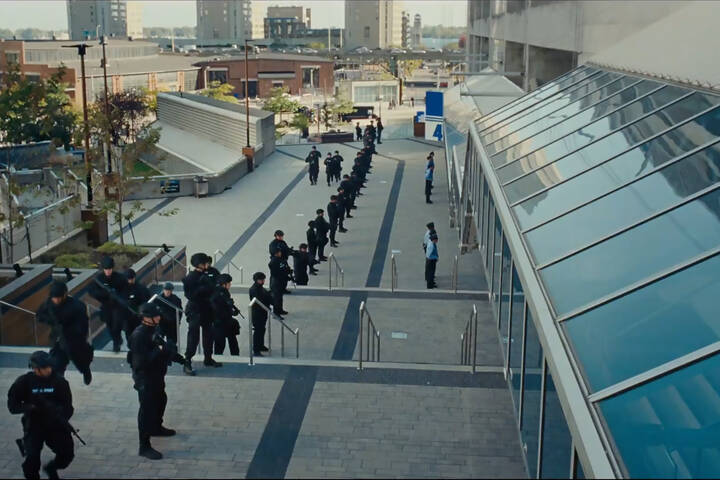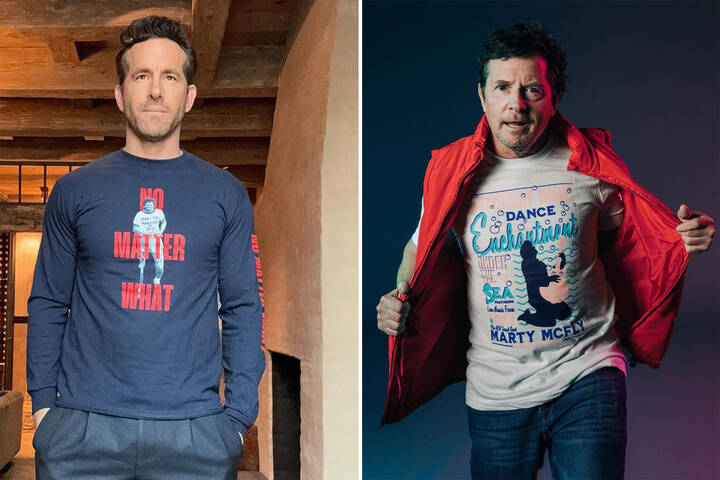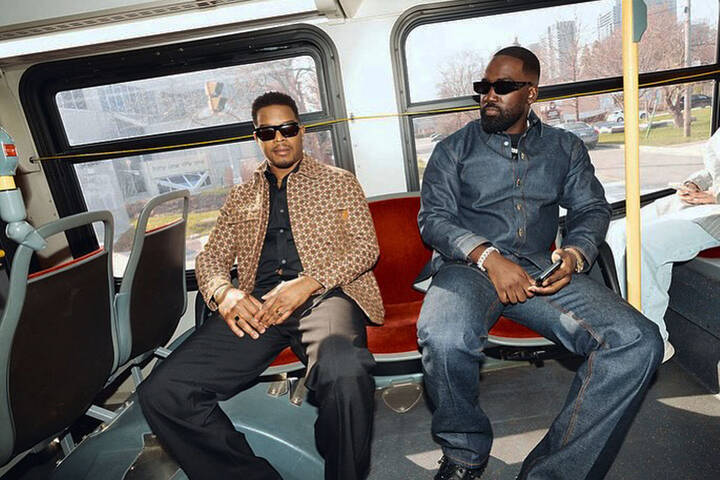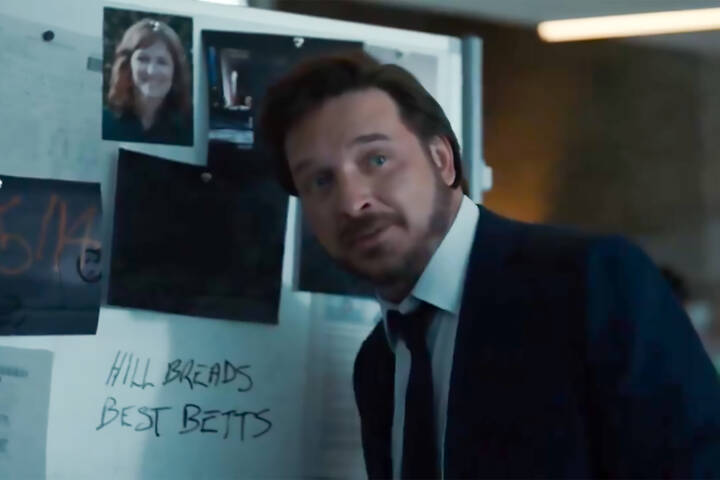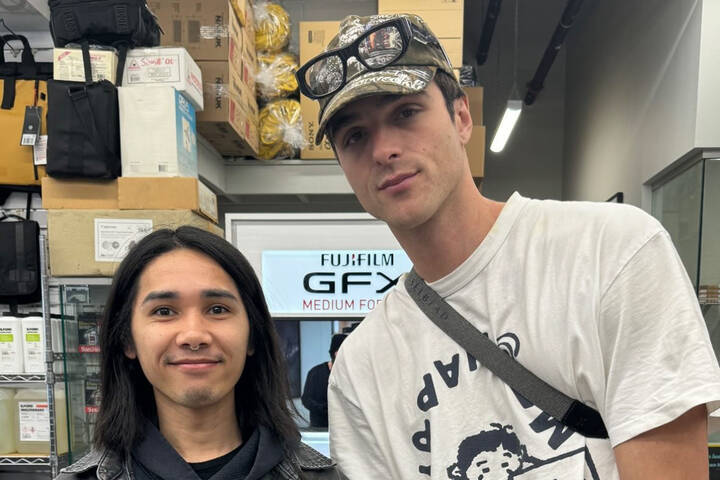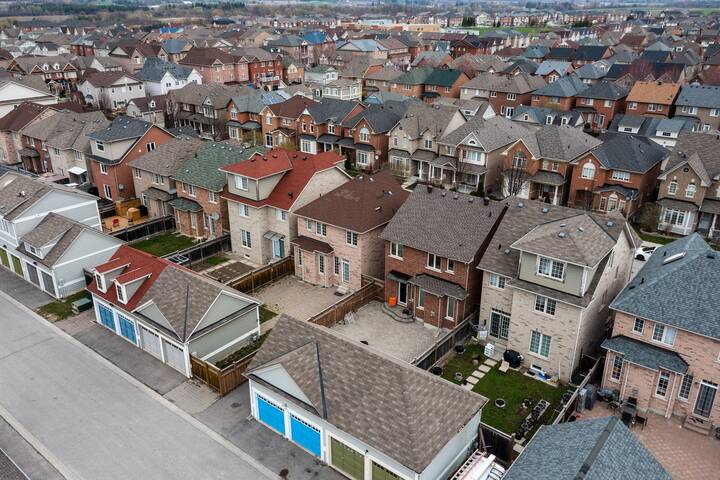
Jamie Travis and The Saddest Boy in the World
As many of you may have noticed, during this year's Toronto International Film Festival I couldn't stop gushing about Canadian short film-maker Jamie Travis and his sheer genius. His short film The Saddest Boy in the World was my favorite entry at the festival (yes, even better than Borat) and remains my favorite short film I have ever seen.
Luckily for those of you who missed it at TIFF, The Saddest Boy in the World will be screening at the Royal Theatre this Sunday as part of the Resfest schedule. I spoke with Jamie shortly after this year's Toronto International Film Festival, and he shared some insights into his films, his process, and his thoughts on Toronto.
Both the Patterns Trilogy and the Saddest Boy in the World are remarkably unique: where do you get your ideas?
That's always the hardest question to answer. I am a deeply obsessive and analytical person, so it's easy for me latch on to ideas and take them to the next level. Getting the ideas in the first place, however, is this weird, inexplicable thing, as I am sure most people would agree. The Patterns Trilogy was an exercise in burning through my long list of visual and thematic obsessions. With Patterns, the things that crept into my mind every time I attempted to write - pipes, unattended appliances, self-conscious suspense, hand washing, wallpaper - I could finally exorcise from my mind. Seriously, everything I was writing at one point had a hand-washing scene. For me, a very clean person, the POV of washing my own hands is one that I see many times a day, so it makes sense that this image would make an imprint on my psyche. I found myself getting sick of my own ideas and my own scripts - and of course, it has often proven difficult to entrench my ideas within sound narrative frameworks - so I decided to make a film that unabashedly showcased my persistent obsessions while eschewing traditional narrative techniques. Why not make a film ABOUT someone washing her hands? One thing you learn in film school is the difference between action and activity. Action is what moves the story along - an important decision, for example. Activity is just the inconsequential stuff that people do - like peeling cucumbers or washing hands. Before Patterns was Patterns, it was called Activity - why not make a film that is all activity and no action?

The trilogy is a self-conscious set of films - much of the writing process involved anticipation of viewer response. How will the audience react when this happens? How can I surprise the audience now? I tried to be hyper-aware of the audience with these films. As the Patterns movies are loose collections of what thrills me, it is no surprise that the films feature some heavy filmmaker references. With Patterns 1, I remember thinking how cool it would be if the film were a combination of Svankmajer (Jabberwocky is one of the most thrilling films I have ever seen) and Japanese horror, featured some formal Kubrick and Hitchcock references and had a Cassavetes title. I don't know if that's how it turned out, but that was certainly present in my loosely remembered fabric of intentions.
The Saddest Boy in the World proved similarly therapeutic to me. It's donning on me now that all my films are reactions to my struggles with writing. While The Patterns Trilogy was an attempt to exorcise my nagging preoccupations, Saddest Boy is a response to struggling with a feature script I was working on called I Hate White Rabbits. After years of writing agony, I condensed the ideas into Saddest Boy. I Hate White Rabbits was an epic whose subject was an eleven year-old boy consumed in a suburb plagued by fires. A sort of hyperbolically overpopulated suburbia with some prepubescent homosexual experimentation. I was getting bored of my stabs at suburbia, and so I dove into a short script that could very cleanly, very concisely and in almost essay-like fashion, delineate the shortcomings of suburban life. The Saddest Boy in the World grew to be more than just that (yes, many of the episodes are warped visions of my own childhood traumas) - like with Patterns, Saddest Boy became for me an exercise in audience response. How do I make the audience laugh at a kid to whom they can sort of relate and then, in the final act, make them feel guilty and question why they were laughing at all?
Each of your films is meticulously crafted, and the choice of color palette seems to be extremely deliberate: what kind of impact do you hope to convey with the colors in your films (especially the lush greens which I can't seem to get out of my head)?
Colour is often the first thing I think of when designing a movie. So far my films have featured not-quite-real worlds. A consistent and deliberate colour scheme is an immediate method of communicating such artifice. I'll take you through my colour choices for Saddest Boy. I knew I wanted to open on a wide shot of an empty room. For me, Timothy's story could be told completely in that shot, by the pictures on the wall, the matching patterns and, of course, the child-size noose. The obvious choice for a little boy's room is blue, but this was too obvious. Pink would have had too much sexual meaning. I liked that green and yellow weren't gender-specific and that they both would hold false hope for Timothy. Whatever colour I chose for Timothy's bedroom, I wanted to see nowhere in the film's other interiors or costumes - except with the mother's birthday dress. I don't know how effective the result is, but I wanted to connect this alternately adorable and disturbing bedroom with Timothy's mother. I wanted to make it clear that she designed the room, that she was responsible for infantilising her son. The other colours all stemmed from this formal conceit. The two-tone gold balloons for the birthday party, I thought, communicate that the party is more for mother Barbara than for Timothy; on a purely aesthetic level, I thought gold was an unexpected colour for a story like this. The exteriors were a given, since sky blue and grass green would automatically communicate the simplified storybook world I was trying to create.

Your films have a great feeling of suburban desolation. This may be reading too much into the movie, but the house number in 'The Saddest Boy in the World' is 905, which is the area code synonymous with Toronto's suburbs. Intentional?
It's funny that you would mention that, since Pauline's phone number is a 905 number, too! This was not in the script. The actor, Christopher Redman, just dialled some variation of his childhood number. Coincidentally, this is the house number of the Saddest Boy location and the area code of Ontario's suburbs. I am from BC and I have never dialled a 905 number. But I like that there is special meaning for Ontarians. Would anyone really believe Pauline lives in the suburbs? Possibly she is a suburban girl all grown up and moved to the big city.
Why the Anderson Children Didn't Come to Dinner and The Saddest Boy in the World are clearly satires of suburban ritual. If suburban malaise has crept its way into The Patterns Trilogy (this certainly wasn't my intent), then maybe I've been more numbed by the suburban experience than I previously thought.
How important is it for you, as a Canadian filmmaker, to have your work showcased at the Toronto International Film Festival, and what kind of opportunities does that open up?
It is essential! I don't know where I'd be without the Toronto International Film Festival. It holds more cachĂŠ than most film festivals in the world, and so it has the capacity to get even a small-time filmmaker like me loads of attention. Through the festival I have met agents, managers, producers, distributors, fellow filmmakers, friends. The Toronto audiences have been consistently responsive to my work; and so premiering at Toronto has proven great for my ego.
How are you enjoying being in Toronto for the festival? Have we been playing good hosts?
Like I said, Toronto is the best host for filmmakers. You blog people are amazing!
You've made five successful shorts: any plans for a feature in the future?
I, of course, have plans for a feature. I am working on a script right now for a twisted little suspense thriller - well, a self-conscious suspense thriller. After working on a script for years that proved too personal, I am excited to be moving into genre territory. So far my films have all had as their emphases design and composition. It is impossible for me to divorce myself from such tendencies, but my feature will be much more character-driven. Since, as I described, my last four shorts have been responses to the first failed feature script (and to my growing boredom with my own ideas), it should come as no surprise that I want to make something completely new to me. I think people have certain expectations of what my first feature will be like - I would really like to surprise everyone and give them something they didn't see coming.
The Saddest Boy in the World screens at the Royal Theatre on December 3, 2006 as part of Resfest. Visit modernfamily.ca or resfest.ca for more details.
Images courtesy Jamie Travis.
Latest Videos
Latest Videos
Join the conversation Load comments
